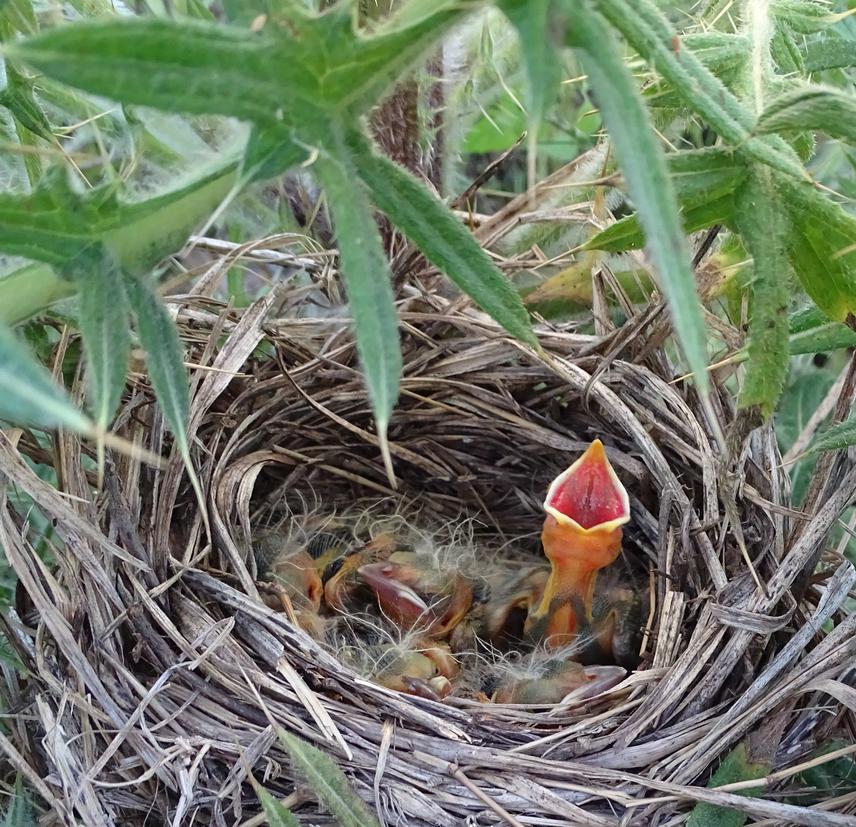María Inés Pereda
Other projects
23 Jun 2016
Protecting the Saffron-Cowled Blackbird: The Last Population of Argentina’s Grassland Symbol
After identifying threats in 2016, we are focusing this year’s campaign in raising the reproductive colonies’ success by applying predation exclusion and controlling brood parasitism in each nest. Our work will be focused on the detection and protection of colonies to increase their reproductive success. We will achieve this by placing Colony Guardians that will install predation exclusions, protect against poachers and control brood parasitism (Roesler et al. 2016) and monitor each nest until chicks fledge successfully. In 2017- 2018 we aim to sharpen the methodology applied during 2016. We will improve the search for new colonies continuing to strengthen and involve local governments, stakeholders and landowners in the search and protection of the colonies.

Nest of chicks.
The Saffron-cowled Blackbird is restricted to sites with grasslands and marshes in Argentina, Uruguay, Brazil, and Paraguay. However, the intensification of agricultural and livestock farming reduced these environments to few sites. Argentina’s breeding distribution has been reduced to one known site in Corrientes and isolated nests in scattered patches of Entre Rios. The species also suffers from parasitism from the Shiny Cowbird’s expanding populations, benefited by livestock rearing.
In Argentina, a reduction in the population size of this Blackbird was estimated at 80.4 % in 2014, with a populations of 500-600 individuals. Hence, in 2015 the species was up-listed to critically endanger based on IUCN Criteria National Levels (Aves Argentinas). In 2015, a group of institutions and researches prospected the area to find colonies and protect them. However, only five colonies were found and four identified fledglings survived awakening the need to design conservation strategies based on scientific knowledge. With a Rufford Small Grant in 2016, we carried out a second campaign, in which we found 11 colonies for which we applied different predator exclusions and managed to protect 28 nests out of the 75 found. We formed an antipoaching squad with provincial governments and Aves Argentina’s partners.
In the 2016 reproductive season, we managed to protect 28 nests with predation exclusions. With our presence in the field with Colony Guardians protecting the colony every day and night, we experienced no poaching cases. Our general objective for the 2017-2018 reproductive season is to develop an effective conservation program to protect the species. In the past year and a half, the support for the species in local NGOs and governments and even so national governments institutions has risen after the efforts applied by our team and Aves Argentinas. This helped to gather information and raise the species status (nationally) as well as to increase the concern and actions to protect it. During the upcoming campaign, we aim to sharpen the methodology applied during 2016 (predator exclusions) with the help of local reserves and NGOs. We wish to improve the search for new colonies and for banded individuals during winter. We also wish to continue to strengthen the links created with local governments, landowners and local birding clubs and NGOs to protect the species in the country.